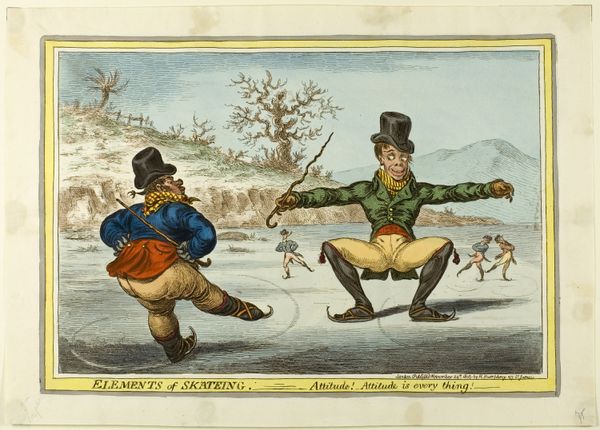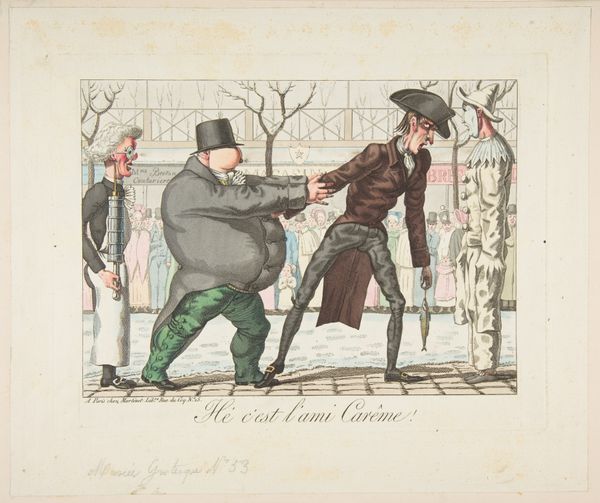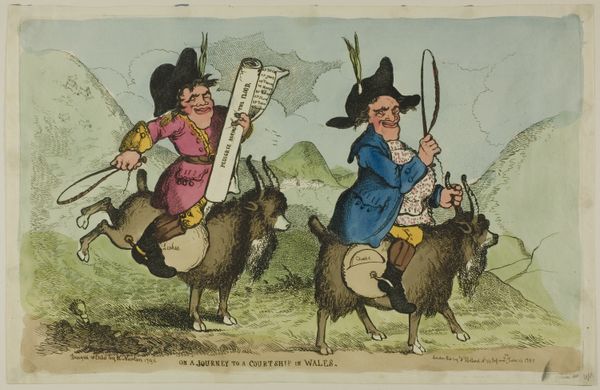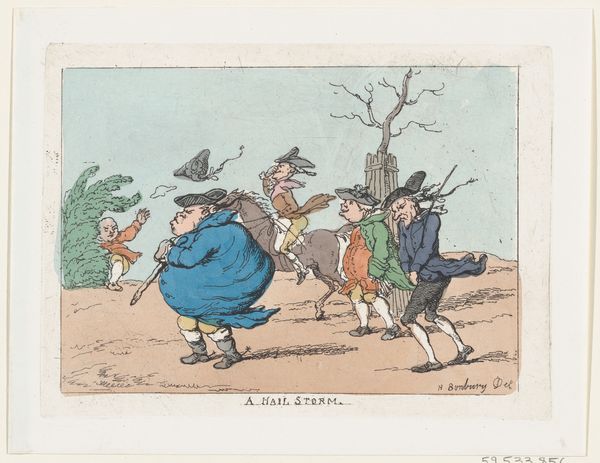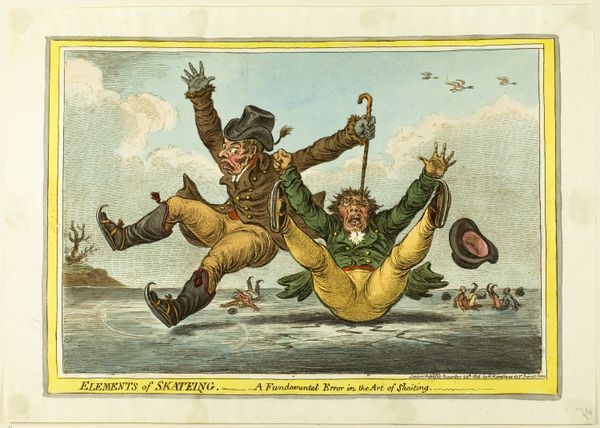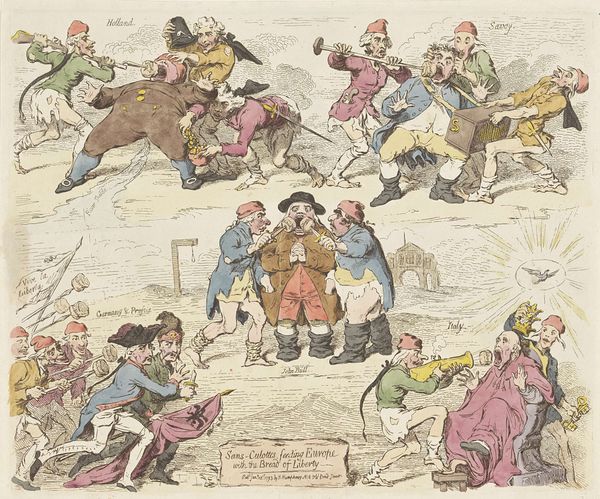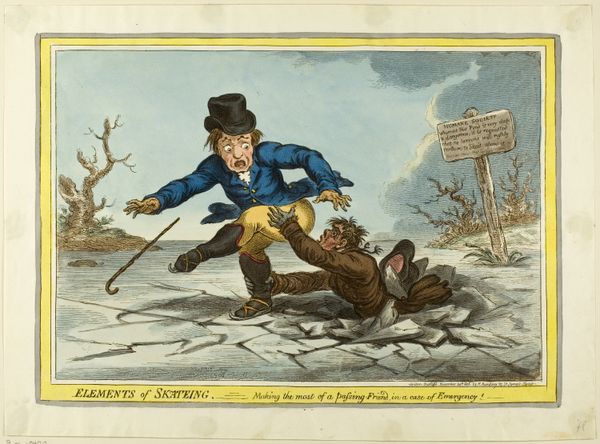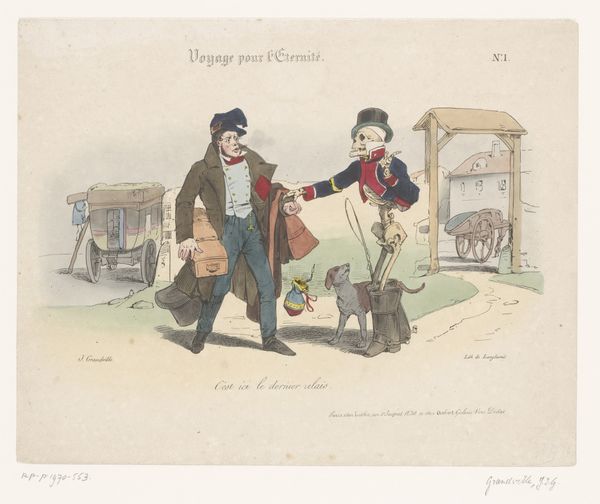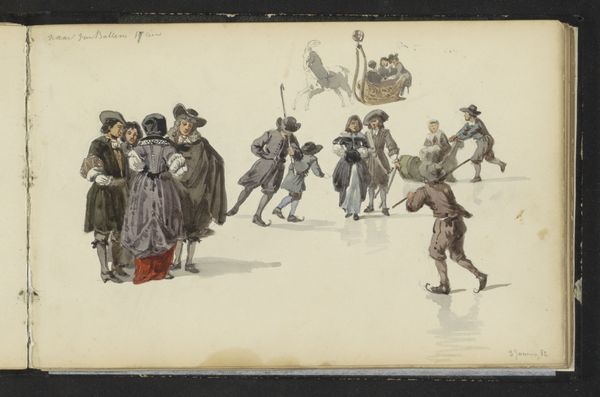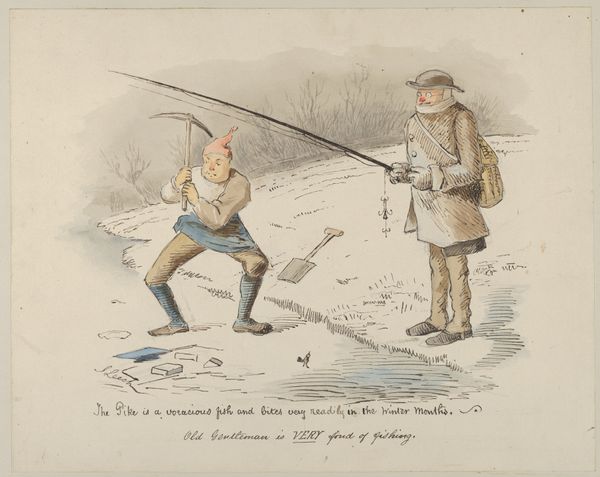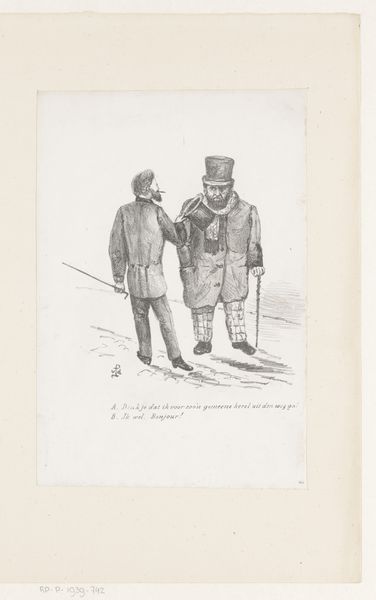
drawing, watercolor
#
drawing
#
imaginative character sketch
#
childish illustration
#
caricature
#
landscape
#
cartoon sketch
#
figuration
#
personal sketchbook
#
watercolor
#
romanticism
#
sketchbook drawing
#
character design for animation
#
watercolour illustration
#
genre-painting
#
storyboard and sketchbook work
#
cartoon carciture
#
sketchbook art
Dimensions: height 229 mm, width 320 mm
Copyright: Rijks Museum: Open Domain
Editor: This drawing, aptly titled "Spotprent met twee schaatsers," made between 1805 and 1807 by an anonymous artist, depicts two skaters in watercolor. What immediately grabs my attention are the exaggerated features of the figures. They’re almost grotesque, but somehow comical. As a cultural artifact, how might we unpack such an unflattering representation of people? Curator: This is a wonderful example of caricature as social commentary, prevalent in the late 18th and early 19th centuries. Notice how the artist employs exaggeration – the figures' postures, facial expressions, and even clothing – to satirize certain social types or behaviors. Have you considered who might have been the target of this satire? Editor: Perhaps a commentary on class? The characters seem overdressed for the activity; could it be poking fun at upper-class pretensions or their awkward attempts to partake in common leisure activities? Curator: Precisely! The 'romantic' style prevalent, especially amongst the elite, may have created opportunities for poking fun. And notice the caption: "Attitude! Attitude is every thing." This strongly suggests the drawing's about affectation and outward appearances, key concerns within societal power structures. How might the setting – a public skating rink – amplify the impact of this caricature? Editor: The public setting is fascinating because it transforms personal shortcomings into public spectacles, magnifying the satire's reach. The characters almost perform for the masses, highlighting both individual and collective absurdities of social status. It feels like an early form of meme culture, perhaps? Curator: Exactly! Caricatures like these played a crucial role in shaping public opinion and reinforcing (or challenging) social norms. Understanding the historical context helps us to see beyond just the visual humor. What was thought funny in the late eighteenth century is no longer palatable today! Editor: It's fascinating how a simple drawing can open a window into social and political dynamics. I'll definitely look at caricatures with fresh eyes from now on. Curator: Indeed, it serves as a great reminder of how art reflects, and shapes, the cultural landscape.
Comments
No comments
Be the first to comment and join the conversation on the ultimate creative platform.
